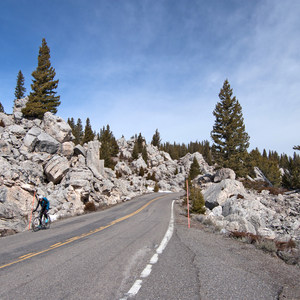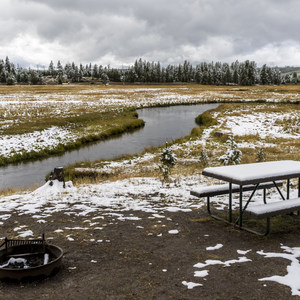You are here
Mammoth Hot Springs is one of Yellowstone’s most famous features… and rightfully so. It lies on the northern edge of the Supervolcano caldera, likely drawing heat directly from the volcano’s magma chamber. This superheated water gets pushed up through mounds of limestone to form colorful mineral deposits.
Located within just a few miles of the park’s northern entrance, the only one open in the winter months, this massive tiered hot spring has seen some of the west’s most significant historical events. Including the Nez Perce flight in 1877 and President Teddy Roosevelt’s visit in 1903.
While today’s visitors may not be as notable, they do number in the thousands as people flock to this unique site all year round.
As one of the only trails that gets you up close and personal with Yellowstone’s fantastic hot springs -- and the only one accessible without snowmobile or shuttle access, it’s a must-do.
It’s also one of the most popular, if not the most popular, groomed ski trails in the park thanks to its ease of access, short length, easy terrain, and interesting views. If you want to beat the crowds, get an early start. If you get in the parking lot at 8:00 AM, you'll likely be the first car there, and it'll made for a quiet, pleasant ski just after the groomers finished their rounds.
Contrary to the “Keep Right” at the entrance (which is there only for cars when the road is open to them in the summer), you can ski this loop either clockwise or counter clockwise. While both are similar, it is generally considered easier to ski clockwise, starting to the left. This gets all your elevation out of the way quickly and leaves you with a longer, more gentle descent for the rest of the ski. If you go right first, your climb will be longer and more gradual, with a steeper descent at the end. This way will also save the most interesting thermal features for the second half of the loop.
DO NOT ski off the groomed trail. A good practice for Yellowstone in general, but especially here where so much thermal activity occurs. You never know what ground is stable and what isn’t. Even the ski path/road is paved over hot springs, as you’ll see by some areas that are melted down to the pavement. For these patches, the park places astroturf down so you don’t scrape your skis.
For those who don’t have skis, while you are not allowed to walk the loop without skis or snowshoes for fear of ruining the groomed track, you can walk along the boardwalks to view some of the thermal features on the northeast side of the loop.











Comments
Sign In and share them.